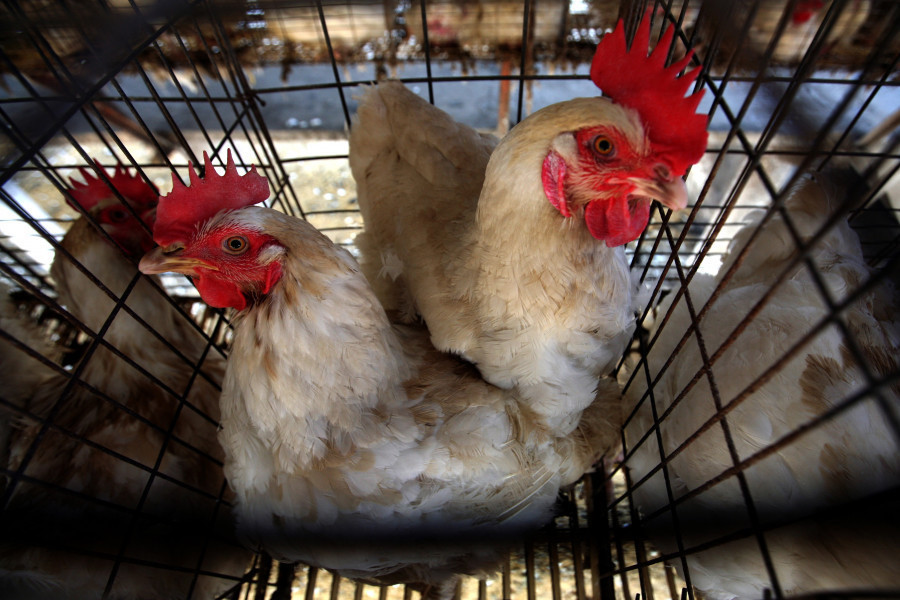Money
Nepal becomes self-sufficient in egg and meat production
According to the Ministry of Agriculture, the country produces 1.61 billion eggs and 548,000 tonnes of meat annually.
Sangam Prasain
Nepal on Thursday announced it had become self-sufficient in the production of egg and meat, and was progressing towards achieving self-sufficiency in milk too.
In the context of food security, this means the country relies fully on domestic production to meet its food needs.
The Food and Agriculture Organisation (FAO), a specialised agency of the United Nations that leads international efforts to defeat hunger, has set the per capita per year requirement of egg in the developing countries at 48 units. The meat requirement for a person, a source of protein, is 14 kg per year while the milk requirement is 91 litres.
As per the new data released by Prime Minister KP Sharma Oli on Thursday, a Nepali eats 18.1 kg of meat and 61 eggs annually, well above the benchmark set by the UN body. The consumption of milk currently stands at 79 litres, still short by 12 litres.
Per capita meat consumption was 9.8 kg per year in 2008 and 9.7 kg in 2000.
The Ministry of Agriculture and Livestock Development said that the country produces 2.3 million tonnes of milk, 548,000 tonnes of meat, 91,000 tonnes of fish and 1.61 billion eggs annually.
The ministry said that based on current market prices, Nepal's annual meat, egg, fish and milk output is valued at Rs450 billion. The country produces meat worth Rs275 billion, milk worth Rs122 billion, fish worth Rs37 million and eggs worth Rs17 billion per year.
“Commercial production is the key reason why Nepal has achieved self-sufficiency in meat and egg,” said Yogendra Kumar Karki, secretary at the ministry. “We are also making progress towards making Nepal self-sufficient in milk.”
The ministry said that Nepal, which used to import 600,000 goats annually, has been able to slash this by 97 percent. Buffalo imports have come down to zero in the last two years.
The import of goats, according to experts, plunged due to Covid-19 related restrictions. “It also reflects a drop in imports during the Dashain festival when a large number of the animals are slaughtered. Last year, the celebrations were subdued, consequently demand fell,” said a ministry official.
According to the FAO, meat demand continues to increase as income keeps on growing in the developing countries, where per capita consumption is projected to rise further and per capita growth rates to be equivalent to those in the developed countries, when compared to the base period.
In the developed countries, changes in meat consumption reflect a decline in the influence of factors such as income and price, and many of these countries have reached saturation in their meat consumption levels.
Historically, lower prices have contributed to making poultry the meat of choice for consumers in the developing countries. With slow growth in income over the projection period, this will continue to be the case, and poultry will constitute the largest share of additional per capita consumption at the global level
The proliferation of the poultry industry has helped the country to achieve self-sufficiency in meat, said Secretary Karki. “The industry is expected to grow further due to the rise in income.”
The Nepal Commercial Poultry Survey 2014-15 prepared by the Central Bureau of Statistics showed that the commercial production of eggs amounts to 1.20 billion units annually.
Chickens are produced commercially in 64 of the country's 77 districts, and 55,871 people are engaged in the business. Commercial chicken production began in 1974. Between 2004 and 2013, a large number of farmers shifted to poultry.
The average global meat consumption was 41.3 kg per person in 2015, according to the FAO.
In the South Asian region, per capita meat consumption was 7.6 kg per person per year.




 13.12°C Kathmandu
13.12°C Kathmandu














